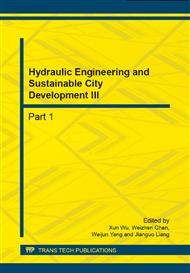p.1176
p.1183
p.1187
p.1191
p.1195
p.1200
p.1204
p.1209
p.1219
Toxic Effects of Toxaphene for Goldfish
Abstract:
Toxaphene is an organochlorine insecticide, widely used in cereals, vegetables, fruits, tea and other pests. However, in killing pests, increasing agricultural production, while toxaphene aquatic creatures threat. In order to enrich aquatic organisms toxicological data, evaluate the risk to aquatic organisms toxaphene healthy growth, we use the traditional toxicological approach to study the toxic effects of toxaphene goldfish (Carassius auratus)'s. Study 5 toxaphene concentration 7d goldfish exposed catalase (CAT), superoxide dismutase (SOD), acetylcholinesterase (TChE), glutathione peroxidase (GSH-PX), malondialdehyde (MDA) effects, the results showed that: toxaphene in 0.1,0.2,0.3,0.4, 0.5 μg / L in five concentrations, these five enzymes promoting effect, with more toxaphene concentration high, goldfish liver CAT activity is stronger, the stronger the brain and liver SOD activity, the activity of the brain TChE weaker, the stronger the brain activity of GSH-PX, and the contrast with the blank, P <0.01, illustrate the five enzymes do toxaphene toxicity testing of biomarkers.
Info:
Periodical:
Pages:
1195-1199
Citation:
Online since:
September 2014
Authors:
Keywords:
Price:
Сopyright:
© 2014 Trans Tech Publications Ltd. All Rights Reserved
Share:
Citation:


